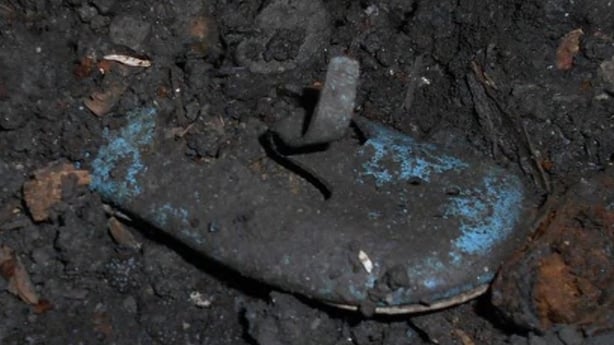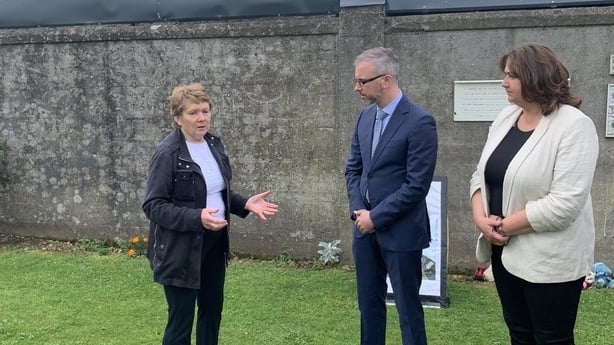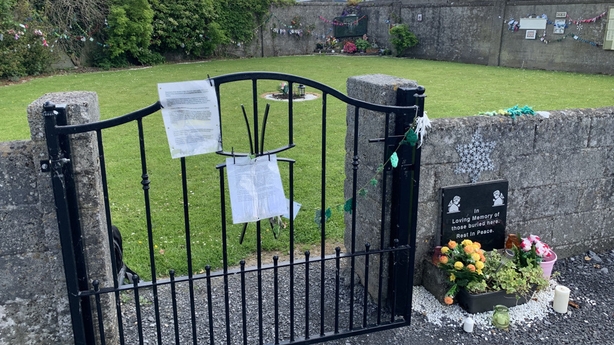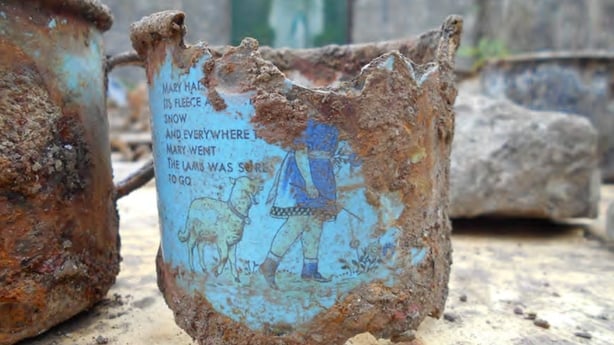Little trinkets, fleeting sentences and small recollections can sum up the magnitude of unimaginable loss, heartbreak and betrayal.
When it comes to the ongoing effort to secure a final resting place for the hundreds of infants buried at the site of the former mother-and-baby home in Tuam, there are some images and words that always spring to mind.
Amid the hundreds and hundreds of pages written as part of the Commission of Investigation into such places, these vignettes have come to symbolise the entire story for me.

First, a paragraph from the report into the initial site investigations at Tuam, in 2016 and 2017: "This is not a recognised formal burial situation. The structural evidence here implies that a sewage treatment facility was reused for the interment of juvenile human remains."
Then, two images contained in the appendices from an interim Commission report. Listed among countless redacted photographs of those buried bones, glimpses into little lives.
Now covered in dirt, who wore the blue shoe found in one of the chambers in Tuam? Was it a boy or a girl? And were they among the others who died in the home, only to be left unacknowledged on the site for decades on end?
And what about the children who drank from the rusted enamel mugs that were also uncovered by forensic archaeologists? Did they recite the poem and memorise the image of Mary and her little lamb, as they sipped their milk? Did they have a carefree childhood, like millions of others who learned the same lines, or had their little minds a sense of what was different for them? And how many are still there, under the ground in Tuam, almost a century after the home first opened?

Lastly, some memories from those who lived in the home and who gave evidence to the Commission of Investigation: descriptions of a playroom containing just two seats and a rubber ball, and the recollection of a child who ate moss off the walls because of the poor quality of food provided.
Almost ten years after the work of Catherine Corless first shone a light on one of the country's darkest chapters, all those details stick out, as signposts towards unfinished, difficult and vital work.
Survivors and the relatives of those who lived, worked and died in the Tuam mother-and-baby home are hoping that the exhumation of human remains there will finally get under way in 2023.
The Department of Children is charged with overseeing this complex process. Successive ministers have recognised the importance of ensuring it is carried out, along with the sensitivities that exist, due to the work that must be undertaken. There's official cognisance too of the passage of time and the need to expedite matters, given the advanced years of many survivors.

And while the calls for action have been heard and are being acted upon, there's frustration about the pace at which the exhumation preparations have been proceeding.
Many survivors and campaigners say that their sole focus is on ensuring the infants placed in underground chambers are given a proper burial and that, where possible, remains are returned to families or descendants.
After a lengthy legislative process, the Institutional Burials Act was passed last July. In recent weeks, the Government sought applications for a Director of Authorised Intervention to oversee the exhumations. This person will be charged with engaging the expertise to undertake excavation, recovery and analysis works at the site.
Almost €7 million has been provided to cover the costs of the project in 2023 alone.

Works will be carried out on a phased basis, with initial excavation followed by the recovery of remains. Bones will be taken from 18 chambers on the site, analysed and subject to DNA cross-referencing.
When they can be formally identified, remains will be returned to the families of the deceased or re-interred in line with wishes of relatives.
Applications for the position of director closed in mid-December and it is anticipated the role will be filled early in the new year. The appointee is to be charged with providing regular updates to relatives and the wider public.
The work in the centre of what is now the Dublin Road estate in Tuam will take time. It will also set the template for what may follow at comparable sites in other parts of the country.
All part of an ongoing - and long delayed - effort to face up to a collective national shame.

When it finally concludes, maybe we will be in some way closer to atoning to whoever wore that blue shoe, or better acknowledging how our country conveniently forgot those children who drank from the rusted nursery rhyme mugs.
Maybe we will have given some form of justice to the 796 children who died in the Tuam home, and for whom no burial records exist.
And maybe those babies, infants and mothers, who were cast aside by Irish society for decades, might finally be at some sort of peace.







